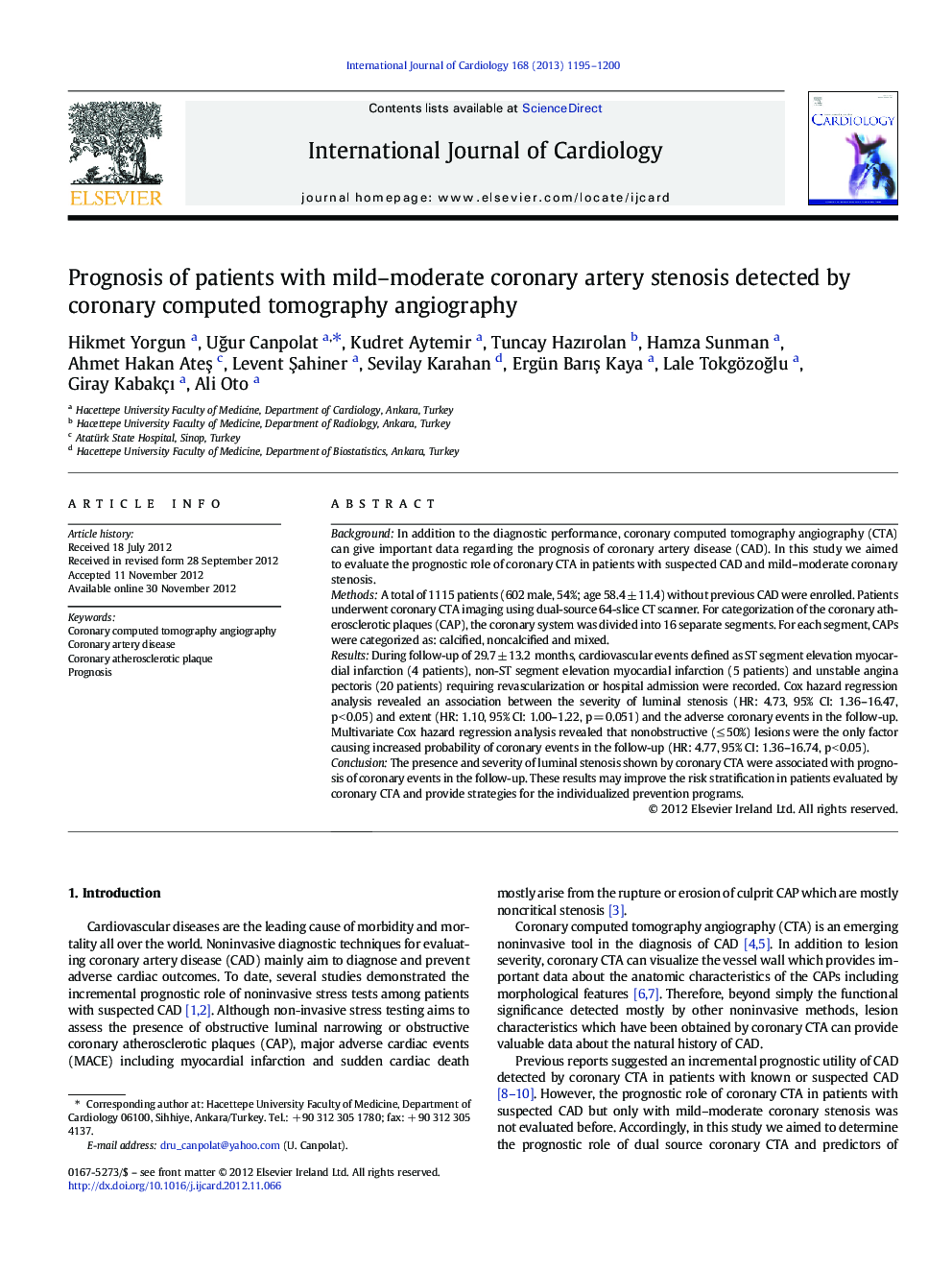| Article ID | Journal | Published Year | Pages | File Type |
|---|---|---|---|---|
| 5974250 | International Journal of Cardiology | 2013 | 6 Pages |
BackgroundIn addition to the diagnostic performance, coronary computed tomography angiography (CTA) can give important data regarding the prognosis of coronary artery disease (CAD). In this study we aimed to evaluate the prognostic role of coronary CTA in patients with suspected CAD and mild-moderate coronary stenosis.MethodsA total of 1115 patients (602 male, 54%; age 58.4 ± 11.4) without previous CAD were enrolled. Patients underwent coronary CTA imaging using dual-source 64-slice CT scanner. For categorization of the coronary atherosclerotic plaques (CAP), the coronary system was divided into 16 separate segments. For each segment, CAPs were categorized as: calcified, noncalcified and mixed.ResultsDuring follow-up of 29.7 ± 13.2 months, cardiovascular events defined as ST segment elevation myocardial infarction (4 patients), non-ST segment elevation myocardial infarction (5 patients) and unstable angina pectoris (20 patients) requiring revascularization or hospital admission were recorded. Cox hazard regression analysis revealed an association between the severity of luminal stenosis (HR: 4.73, 95% CI: 1.36-16.47, p < 0.05) and extent (HR: 1.10, 95% CI: 1.00-1.22, p = 0.051) and the adverse coronary events in the follow-up. Multivariate Cox hazard regression analysis revealed that nonobstructive (â¤Â 50%) lesions were the only factor causing increased probability of coronary events in the follow-up (HR: 4.77, 95% CI: 1.36-16.74, p < 0.05).ConclusionThe presence and severity of luminal stenosis shown by coronary CTA were associated with prognosis of coronary events in the follow-up. These results may improve the risk stratification in patients evaluated by coronary CTA and provide strategies for the individualized prevention programs.
